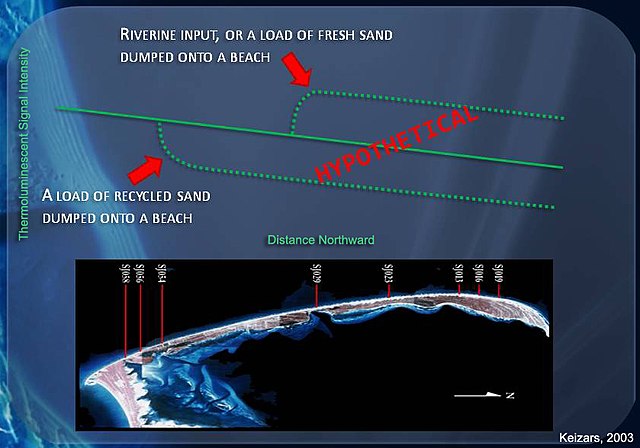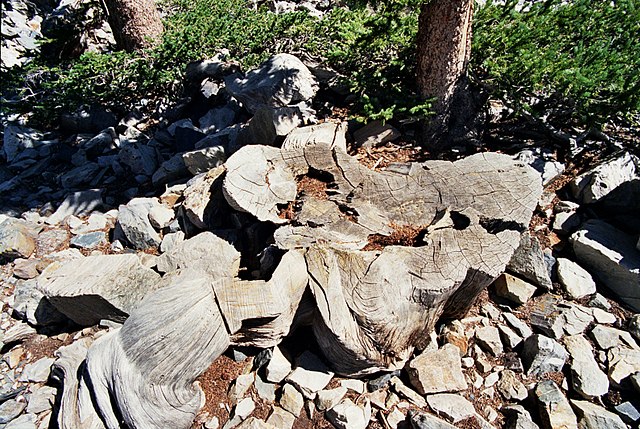Thermoluminescence dating
Thermoluminescence dating (TL) is the determination, by means of measuring the accumulated radiation dose, of the time elapsed since material containing crystalline minerals was either heated or exposed to sunlight (sediments). As a crystalline material is heated during measurements, the process of thermoluminescence starts. Thermoluminescence emits a weak light signal that is proportional to the radiation dose absorbed by the material. It is a type of luminescence dating.
Figure 1: The three stages of thermoluminescence as outlined by Aitken (1985, 1998) and applied to a quartz grain (Keizars, 2008b)
Figure 2: The process of recharging and discharging thermoluminescent signal, as applied to beach sands. (modified from Aitken, 1998; Keizars, 2008a)
Figure 3: Thermoluminescence signature lost during migration of two sand grain sizes (Keizars, 2008).
Figure 4: Illustrated method of passively monitoring sand input (Keizars, 2003).
Radiocarbon dating is a method for determining the age of an object containing organic material by using the properties of radiocarbon, a radioactive isotope of carbon.
Radiocarbon dating helped verify the authenticity of the Dead Sea scrolls.
North Ronaldsay sheep on the beach in North Ronaldsay. In the winter, these sheep eat seaweed, which has a higher δ13C content than grass; samples from these sheep have a δ13C value of about −13‰, which is much higher than for sheep that feed on grasses.
Measuring 14 C is now most commonly done with an accelerator mass spectrometer
The stump of a very old bristlecone pine. Tree rings from these trees (among others) are used in building calibration curves.








